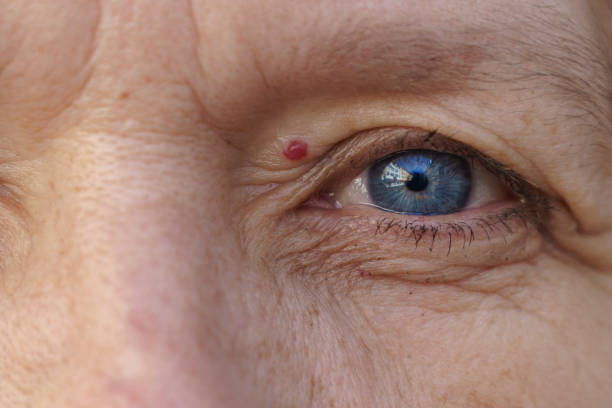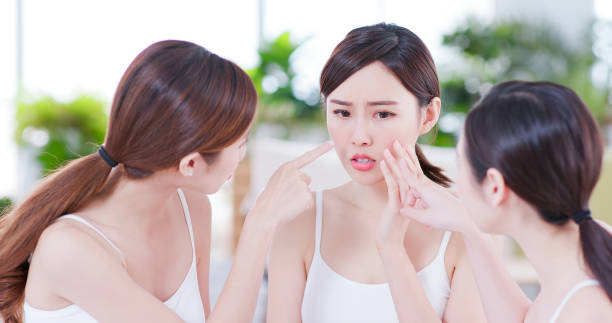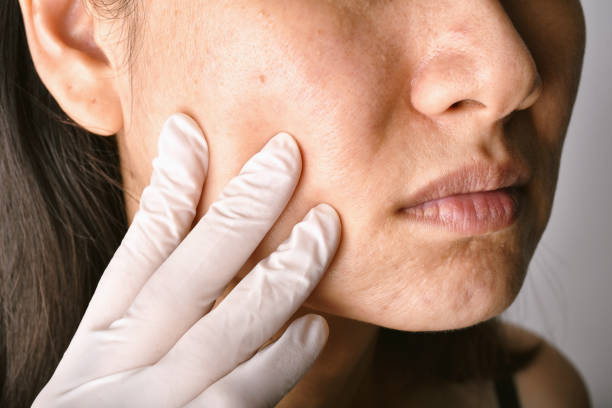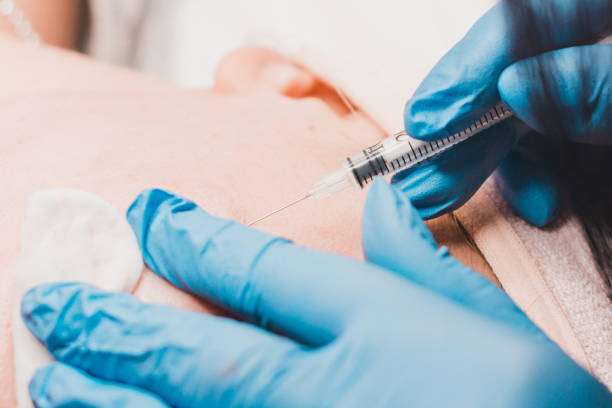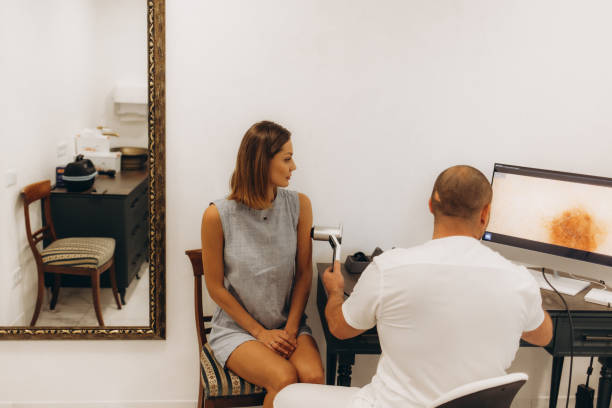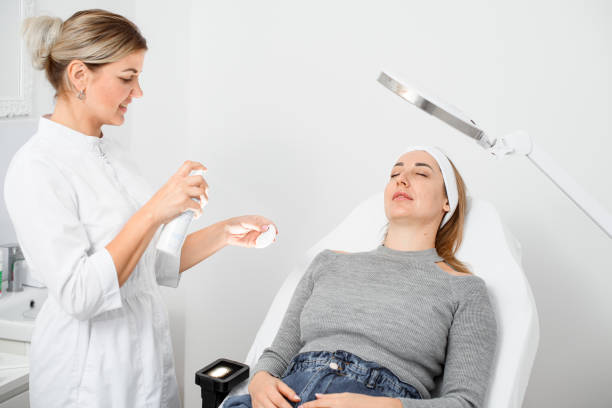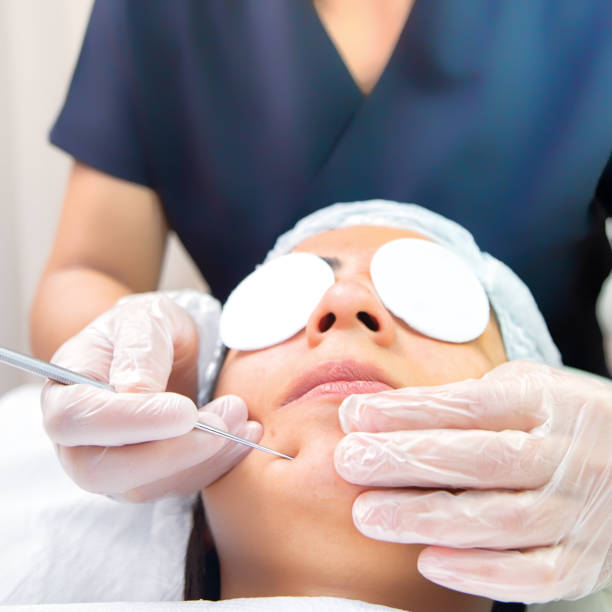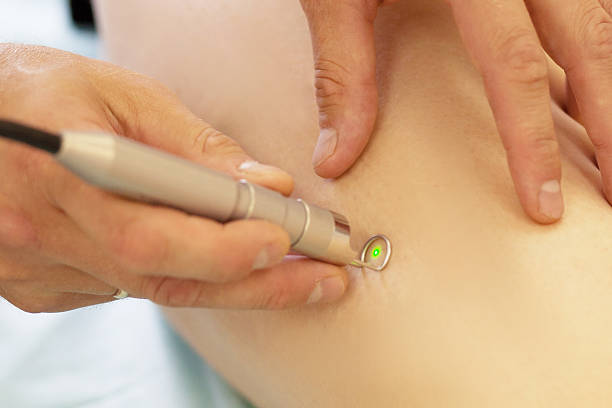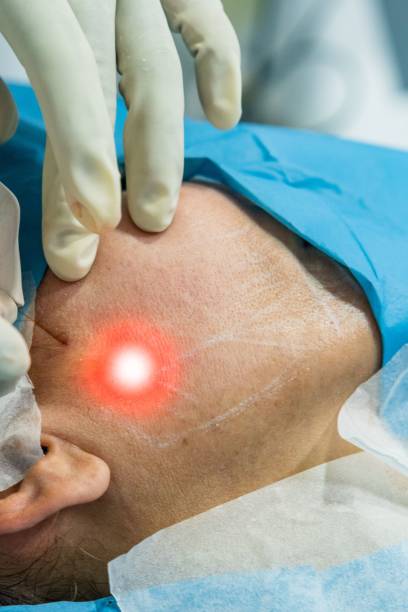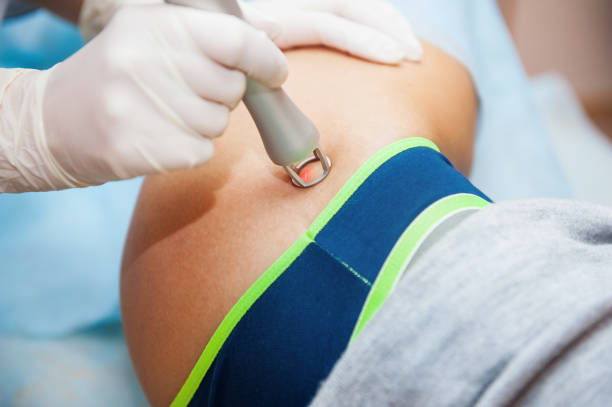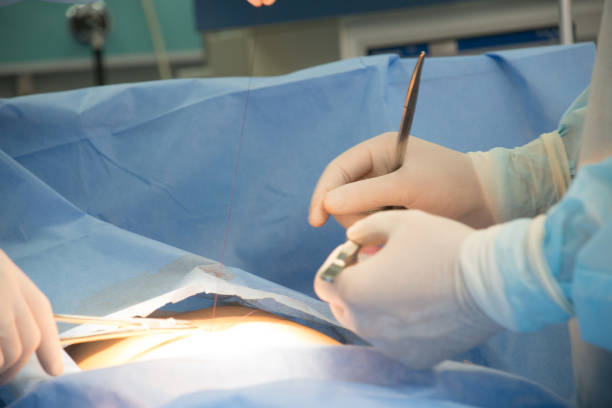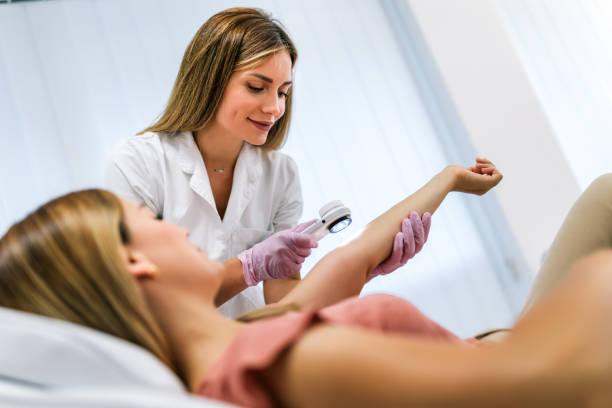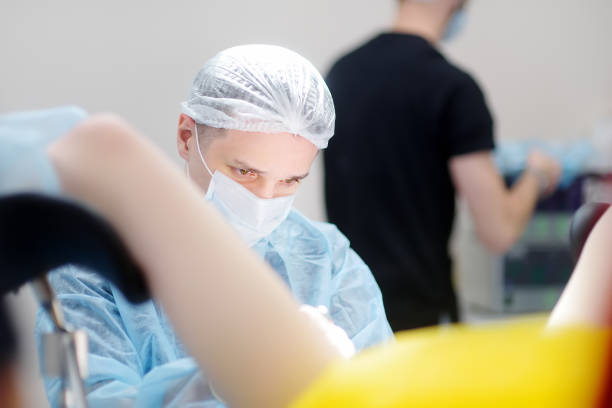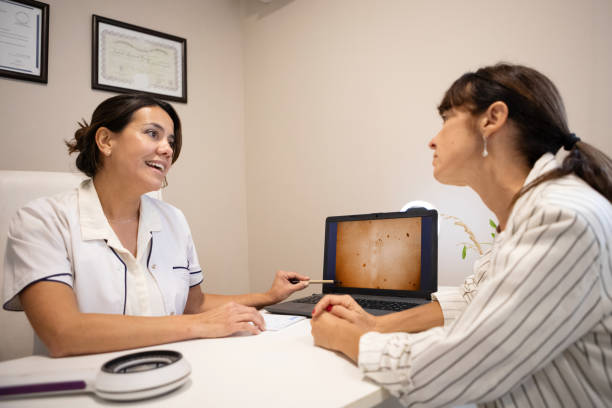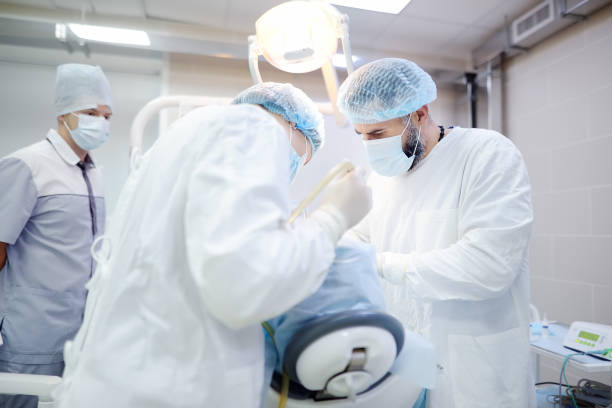How to Remove Scar Free Eyelid Skin Tag Safely and Effectively
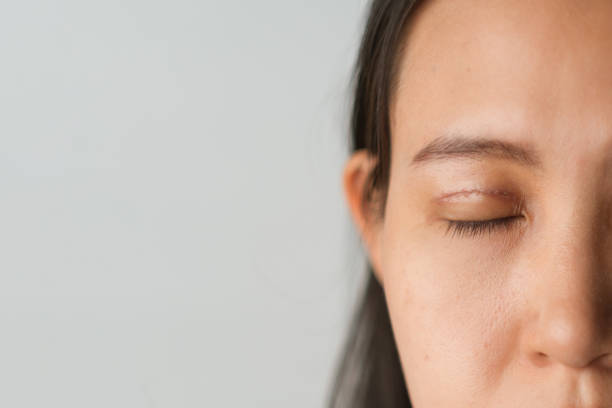
Many people are up for flawless results and are only willing to Remove Scar Free Eyelid Skin Tag if it can be done without visible scarring. Eyelid Skin Tags are benign growths that may seem like small, fleshy bumps on the thin skin close to the eyes. Although benign, they can be a cosmetic concern, particularly when they occur on the eyelids, as they can impede vision, induce irritation, or be problematic aesthetically.
The good thing is that it is possible to remove scar-free eyelid skin tag, keeping your skin around the eyes looking smooth and young. Scar-free removal techniques aim at precision and care so that the procedure does not affect the skin's natural look or cause permanent harm.
The following parts of this write-up explain why it’s important to remove scar-free eyelid skin tag, what treatments are available, how to prepare for the surgery, and how to care for your eyes after the procedure. Whether you want to go for professional treatments or have them removed at home, learning the importance of scarless eyelid skin tag removal is crucial before deciding.
Removing Eyelid Skin Tags and Understanding Them
They are small, soft growths usually on the eyelid’s surface. But they are generally harmless, and although they can be an annoyance when you rub them or they irritate your eyes by blinking or touching them with your glasses.
To remove scar-free eyelid skin tag, it is essential to understand how these tags show up in the first place. The factors contributing to skin tags include friction, genetics, and hormonal changes, which are more likely to develop with age.
These growths are often unproblematic, although they may be unsightly or bothersome, and it may be desirable to remove them. Many people are concerned that the removal process leaves no noticeable scars, especially in sensitive areas like the eyelids.
While there are several methods by which the skin tags on the eyelids can be removed scar-free, the treatment method will vary with the size and location of the tag, skin type and personal preference. We will check the most usual, safe and effective ways to remove eyelid skin tags without leaving scars.
Eyelid Skin Tags and Their Removal
Eyelid skin tags are small, soft growths on the skin’s surface near the eyelid. Mostly, they are benign and can be a problem if they irritate when you blink or rub against your glasses.
The reason eyelid skin tags appear is that it is essential to get them out the best way possible and remove them scar-free. Several factors can cause the growth of skin tags, including friction, genetics and hormonal changes, and skin tags tend to occur more often with age.
Although these growths are usually painless, they may be bad in appearance or even cause irritation; therefore, removal comes out for the rescue. Many people’s key concern is that the removal process doesn’t leave any noticeable scars, especially in such a delicate area as the eyelids.
The different methods to remove scar-free eyelid skin tags also differ a little, but the treatment method depends on the size and location, skin type, and personal preferences. We will see the most common, safe and effective methods professionals use to remove scar-free eyelid skin tags.
Non-Surgical Methods to Remove Eyelid Skin Tags Scar-Free
Nowadays, many people prefer non-surgical methods to remove scar-free eyelid skin tag, as these methods are less invasive and have a faster recovery time. If performed by a skilled professional, these options can be very effective, and the delicate skin around your eyes will not be damaged.
Cryotherapy for Eyelid Skin Tags
Cryotherapy is one of the most popular non-surgical treatments for removing eyelid skin tags without scarring. The freezing of the skin tag is done with the help of liquid nitrogen. The skin tag tissue dies off when exposed to cold temperatures and falls off in a few days. With cryotherapy, skin tags can be removed without leaving scars because the process is mainly limited to the skin tag itself and not the surrounding skin.
However, this is important to be done by a trained specialist and not damage the skin around the eyes. Eyelid skin tags treated with cryotherapy are fast, not painful, and the healing time is short. Proper aftercare instructions after the procedure will have a low risk of scarring.
Laser Removal for Eyelid Skin Tags
Laser removal is another advanced, non-surgical way to remove scar free eyelid skin tag. The focused beam of light is precisely directed to the skin tag in this treatment. The laser vaporises the tag’s tissue without skin cuts. This significantly reduces the risk of scarring and is ideal for sensitive skin around the eyes.
In particular, laser removal is helpful because it also speeds healing. The procedure is quick, and the skin around it is left unharmed. Most people report the process as painful, though some describe having only a slight tingling sensation. Redness may remain after the procedure and usually fades.
Laser treatment for eyelid skin tags is precise as well. The procedure professional can change the laser intensity to be as strong or weak as needed to remove the skin tag. The precision means that the surrounding tissue will be left untouched, reducing the risk of scarring.
Benefits of Non-Surgical Eyelid Skin Tag Removal
When you remove scar-free eyelid skin tag, the best thing to do is to choose non-surgical methods. Both these procedures are painless and have no or minimal recovery time, so they are relatively painless. After the treatment, most people can resume their normal activities immediately.
Furthermore, these methods are fast and effective, and the results are visible quickly. In particular, both treatments reduce the risk of scarring, which is very important when treating the area around the eyes where the skin is thinner and more sensitive.
Surgical Methods for Remove Scar free Eyelid Skin Tag
However, non-surgical methods are widely used, while others may prefer a more advanced method to remove scar-free eyelid skin tag. If the skin tag is large or does not respond well to other treatments, surgical removal, carried out by a qualified professional, can be an effective treatment method.

Excision
A skin tag excision is a straightforward surgical procedure whereby a scalpel removes the skin tag. This is mainly done under local anaesthesia to ensure patients remain comfortable. The skin tag is removed, and the wound is carefully stitched to allow for proper healing and minimise scarring.
Larger or deeply rooted skin tags are more easily excised. Although there is a risk of scarring with this method, this can be minimised when performed by a skilled professional. Post-treatment care instructions must be followed to obtain the best possible healing results. Stitches are usually taken out within a week, and healing is fast with minimal or no scarring.
Radiofrequency (RF) Removal
Another surgical option to remove scar free eyelid skin tag is through radiofrequency. This method uses Radiofrequency energy to heat and remove the skin tag. RF removal is a precision technique that can safely remove the skin tag without injuring the surrounding tissue. This method also speeds up healing and reduces the risk of scarring, and is suitable for use on sensitive areas such as the eyelids, like laser removal.
In this method, the RF energy used cauterises the area so there is no excess bleeding, and the wound heals without risk of infection or scarring. RF removal is a relatively painless procedure, and most patients can return to their daily activities shortly after treatment.
Benefits of Surgical Removal for Eyelid Skin Tag
Surgical methods like excision and radiofrequency removal can provide excellent results for those who want to remove eyelid skin tags without scarring. The advantage of these surgical treatments is that they will entail a more prolonged recovery duration than the non-surgical solutions. Still, these are great options for skin tag removal, as they are far more effective for removing bigger, harder skin tags.
These methods provide the advantage of assuring that the skin tag is completely removed, ensuring no recurrence. Furthermore, when a skilled professional performs it, the risk of scarring can be significantly reduced. It is essential to follow aftercare carefully to get proper healing and the best cosmetic result.
Aftercare Tips to Remove Scar-free Eyelid Skin Tag
However, aftercare is also required to remove scar-free eyelid skin tag, even with the best treatment. Around your eyes, the skin is delicate and needs extra attention to heal well and prevent any visible marks.

The Treated Area Must Be Clean And Dry.
Clean the area after the procedure, gently using a mild non-alcoholic solution or as advised by your specialist. Also, do not rub or scrub the eyelid, which can irritate the skin and cause scarring. After patting the area dry with a clean towel, follow any instructions given to you by your clinic.
Avoid Makeup and Harsh Products
Skip makeup, mascara, or any chemical-based skincare around your eyes until the area heals completely, and to remove scar-free eyelid skin tag. In some cases, introducing foreign products too soon can lead to irritation or infection, affecting the final results.
Apply Healing Ointments as Prescribed
If your practitioner recommends so, your ointment may be used to prevent scarring, as well as an antibiotic cream or a healing gel. It is known that they aid skin regeneration and fight inflammation. Use them as always instructed and never overapply.
Sun Exposure Should Be Protected In The Area.
Healing skin can also darken from direct sunlight. If you are going outside, wear sunglasses and avoid being too exposed to the sun on the treated area, especially during the peak hours.
Avoid Picking or Touching
Even if a scab forms, do not pick or scratch it. Let it fall off naturally. It is essential to remove scar-free eyelid skin tag and make your skin smooth.
Gentle Massage After Healing
After your skin heals fully, you can massage gently using a vitamin E-based oil or gel to smooth the skin texture and maintain an even skin tone. Before starting this step, always consult your clinic.
Aftercare ensures healing and scar-free results, with your eyes looking clean and refreshed. Taking these steps very seriously helps you immensely increase your odds of a perfect recovery.
The Safe Removal of Scar Free Eyelid Skin Tag by Professionals
Expert Precision for Delicate Areas
Removal of scar-free eyelid skin tag growths can be taken care of by choosing a professional. Precision techniques, which minimise trauma to the skin and cause less chance of permanent marks, are used by experts.
Advanced Tools for Scar-Free Results
The clinics have advanced technologies such as radiofrequency, laser or microsurgical scissors. Such tools can remove these tools clean, avoiding disruption to surrounding tissue, exactly as occurs with scar-free healing.
Accurate Assessment Before Removal
Not all eyelid growths are simple skin tags. Before treatment, professionals determine if any other conditions can be ruled out and provide peace of mind and proper care.
Safe, Sterile Environment
Ideal outcome clearly depends on hygiene. To prevent infection risks, clinics maintain sterile conditions to promote a healthy healing process.
Tailored Aftercare for Scar Prevention
They don’t just remove the tag; professionals help you with proper aftercare. Their support includes wound care tips, product suggestions for preventing scars, and much more to make a smoother recovery.
Follow-Up and Ongoing Support
Your clinic is ready to deal with any post-removal concerns that might arise. The doctors follow up with patients to monitor how well the area is healing and to ensure it remains scar-free and healthy.
Common Mistakes to Avoid When You Remove Scar Free Eyelid Skin Tags at Home
Using Unverified Home Remedies
It may seem harmless to try to remove scar-free eyelid skin tag growths with kitchen ingredients such as apple cider vinegar or garlic, but this can irritate the sensitive eyelid area. Burns, discolouration and scarring - all anti-scar methods - are standard, defeating the aim of scar-free removal.
Pulling Or Cutting The Skin Tag Yourself
Snipping off a skin tag with scissors or tying it off with string is one of the riskiest mistakes. This kind of DIY approach is too delicate for the eyelid. It may look simple, but tools that are not sterile can lead to infections, bleeding and scarring, even when done improperly.
Ignoring Underlying Conditions
Not all bumps near the eyelid are skin tags. Removing scar-free eyelid skin tag tissue without confirming the diagnosis may result in trouble, especially if it is a cyst, wart, or mole. It can be misidentified, and this will delay proper treatment.
Skipping Aftercare
If you get an eyelid tag off at home, you can cause scarring or pigmentation with poor aftercare. It is essential to heal the skin of the eyelid gently, and skipping some of the crucial after-care steps can worsen it.
Considering that DIYs Are Always Safe
However, many people assume that removing skin tags is safe because they are benign. However, when dealing with scar-free eyelid skin tag growths close to your eyes, there is a minimal margin for error. This can injure your eye or the skin surrounding it.
Why Choose Revitalise London to Remove Scar Free Eyelid Skin Tags
Choosing a professional clinic with experience in delicate areas like the eyelids and skin care treatment is essential. To fix eyelid skin tags at Revitalise London, we give a sure shot to use the minimum scarring and leave you with smooth and natural-looking skin.
Expert Practitioners and Advanced Techniques
Our skilled professionals handle eyelid skin tag removal using the latest technology. Depending on skin tag size, we perform non-invasive treatments such as cryotherapy, laser removal and advanced excision techniques, where the skin around the eyelids is free. Because our practitioners have a great deal of experience working in such sensitive areas as the eyelids, we can perform a safe and effective procedure.
Tailored, Scar-Free Solutions
So we have customised treatment plans for each client, which depend on every skin type. Preserving the delicate skin around the eyes is essential; we know how to remove it as gently as possible. The aim is to leave your skin looking rejuvenated and healthy, and to remove the skin tag.
Aftercare and Post-Procedure Support
We keep developing after the first procedure. At Revitalise London, aftercare is comprehensive to ensure the best healing. Our team also helps you best achieve results that you can maintain and prevent scarring.
If you are searching for an expert scar-free eyelid skin tag removal experience, Revitalise London will give you the best care with the best results. We trust you for a professional, smooth and scarless treatment journey.

